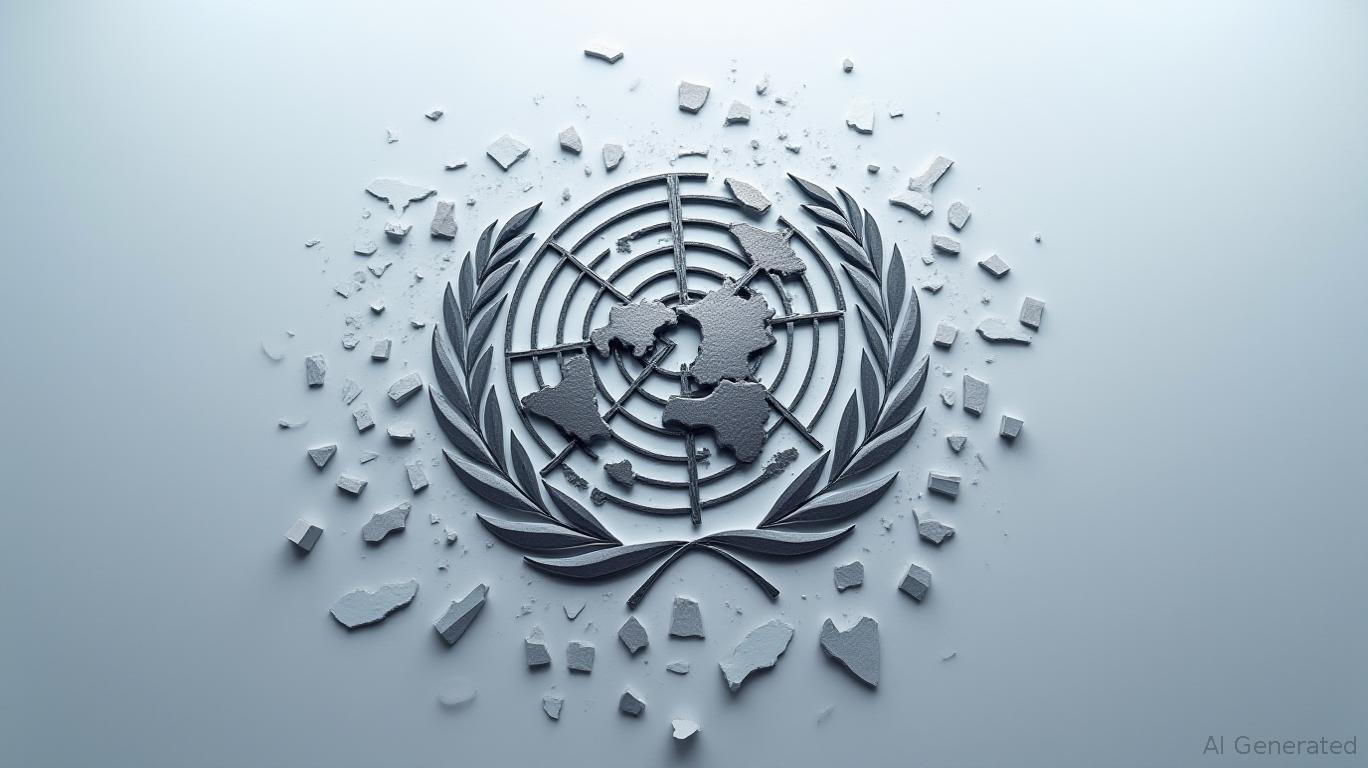How might the White House's approach to the government shutdown affect market volatility?
UN Charter Resilience and Global Governance: Navigating Geopolitical Risks and Institutional Reforms
The United Nations, once a beacon of post-WWII cooperation, now faces its greatest test since its founding. With violations of humanitarian law surging—from Gaza's “weaponized hunger” to child soldier recruitment in the Democratic Republic of the Congo—geopolitical instability is reshaping global markets. This isn't just a humanitarian crisis; it's a seismic shift in how nations, companies, and investors must navigate risk and opportunity. Let's unpack the stakes, the sectors to watch, and how to profit from the chaos—or at least survive it.

The Geopolitical Minefield: Risks and Realities
The numbers are stark. In 2024, UN-verified violations of children's rights hit a record 41,370—a 25% jump from 2023. Attacks on schools and hospitals, now routine in Gaza, Ukraine, and Sudan, have become economic weapons. Meanwhile, funding shortfalls for UN programs like UNFPA (women's health) have forced 50% of clinics to close in Sudan. This isn't just a moral failure—it's a market-moving crisis.
Why? Because instability breeds volatility. Defense budgets are rising (the U.S. military spending hit $858B in 2024), cyberattacks on critical infrastructure are up 30% since 2020, and commodity markets are disrupted by conflicts over resources like fuel and minerals. Investors ignoring these trends are playing with fire.
Defensive Plays: Where to Hedge Against Chaos
1. Defense & Aerospace: The Iron Wall of Stability
When nations feel threatened, they spend on defense.
Since 2023, LMT's stock has risen 28%, fueled by Pentagon contracts for hypersonic missiles and drone systems. This isn't just about war—it's about deterring it.
2. Cybersecurity: The Digital Shield
As conflicts go digital, companies like
Historical data supports this stance: when CRWD's quarterly revenue growth exceeded 15% YoY, a buy-and-hold strategy for 60 days delivered a 29.80% compound annual growth rate (CAGR) from 2020–2025, with returns 184.71% higher than the benchmark. However, investors must note a maximum drawdown of -58.30%, underscoring the need for risk management. This volatility is a trade-off for outsized gains in a sector where demand is existential.
This sector is a must-have in a world where data is a battleground.
3. Sustainable Resources: Weaponized Commodities Demand Alternatives
When fuel is used as a weapon (see Gaza's collapsing hospitals), control over energy and minerals becomes strategic. Companies like
FSLR has surged 40% since 2023 as solar adoption soars in regions like the DRC, where cobalt mines (critical for batteries) are under threat. This is about reducing vulnerability—literally.
The Reform Play: Betting on UN Efficiency
The UN isn't just a humanitarian actor; it's a $30B bureaucracy. Reforms under UN80—a push to streamline operations—are creating opportunities. Firms that help the UN cut costs or improve logistics could thrive.
- Tech Solutions: (IBM) is already a UN partner for cloud infrastructure. A cheaper, faster UN means smoother aid delivery and less waste.
- Logistics Giants: Companies like (FDX) or Maersk (MAERSK) could win contracts to deliver supplies to conflict zones, now a $10B annual market.
IBM's cloud division grew 15% YoY in 2024, partly due to UN contracts for data security. This isn't charity—it's profit with purpose.
The Bottom Line: Survive the Storm, Profit from the Aftermath
The UN's resilience is tied to markets' stability. Investors must brace for volatility but also see the upside:
- Hedge with defense and cybersecurity stocks (LMT, CRWD). When
- Invest in sustainable resources (FSLR) to insulate against commodity wars.
- Look for UN80 reform beneficiaries (IBM, FDX) as the organization becomes leaner.
Remember: Geopolitical chaos isn't just a risk—it's a signal. The companies that protect people and profits in this new era will be tomorrow's winners. Stay aggressive, stay diversified, and never underestimate the market's ability to turn chaos into opportunity.
Action Plan:
- Buy
- Add FSLR to your portfolio for long-term energy security.
- Watch IBM's UN80-related projects for upside catalysts.
This isn't just about money—it's about betting on a world that can survive its own recklessness.
Data as of June 19, 2025. Past performance ≠ future results. Consult a professional before investing.
Sign up for free to continue reading
By continuing, I agree to the
Market Data Terms of Service and Privacy Statement
Aime Insights
How will Walmart's OnePay crypto trading service affect the broader cryptocurrency market?
How will the small cap rally impact my tech portfolio?
How might the deployment of strategic assets by North Korea impact global market sentiment?

Comments
No comments yet